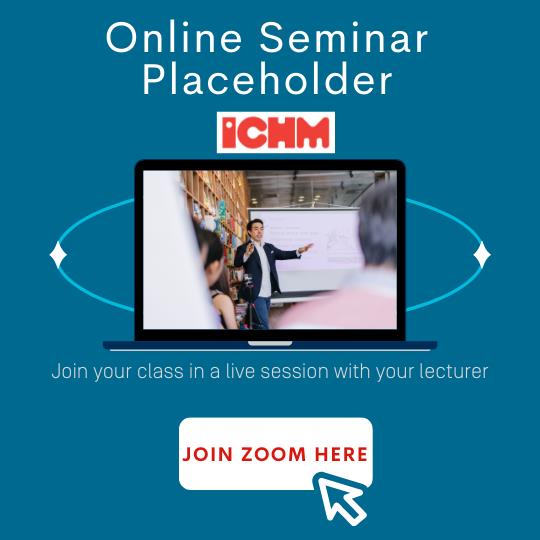In this topic, we will look at start-up ventures and how we can define these. You will also research and discuss various start-up examples, applying the theory to what you can see happening around you. We will then look at the characteristics of organisations at various stages and consider what is normal and what is abnormal for these stages. This will lead into a discussion on organisational failure, which explores some of the overarching reasons for this.
Welcome to Topic 10: The Journey Part 2: Characteristics of Organisations at Various Stages. In this topic, you will learn about:
- Start-up ventures
- Normal and abnormal characteristics across the stages of the organisational life cycle
- Organisational failure.
These relate to the Subject Learning Outcomes:
- Discuss the importance of entrepreneurship as a driver of growth and how it varies from "business as usual".
- Identify generally shared traits of entrepreneurs, although there is no single set of entrepreneurial traits.
Welcome to your pre-seminar learning tasks for this week. Please ensure you complete these prior to attending your scheduled seminar with your lecturer.
Click on each of the following headings to read more about what is required for each of your pre-seminar learning tasks.
Watch the video, Startups: what we know about startups, to get some key thoughts about start-ups, from Steve Blanks.
Research at least two (2) quite different startups from any industry (or from different industries). Find these examples and make some notes in your reflective journal. Be ready to explain your examples to your team as part of the scheduled seminar. Use the following questions to guide your research:
- Briefly describe the startups.
- Explain what makes these example start-ups so different from each other.
- What makes these ventures innovative or unique?
- Are/were these ventures successful? Explain why or why they were not.
You can access the reflective journal by clicking on ‘Journal’ in the navigation bar for this subject.
Watch Kauffman Founders School 2013, Founder's dilemmas: Challenges on the road to growth, streaming video, YouTube.
- Skim through the Global Startup Ecosystem Report GSER 2021 and pick two (2) sections that interest you. The sections may be based on a specific geographic region, be led by the summary of findings or be based on one of the discussion articles in the second half of the report.
- Based on the chosen sections of the report, develop two (2) interesting observations and post your responses to Topic 10: Forum activity 1.
- Reflect on the observations from at least three (3) others in the class.
You can also navigate to the forum by clicking on 'ENT100 Subject Forum' in the navigation bar for this subject.
Read through the topic content and action the learning tasks within it.

What is a start-up?
According to Blank (Kauffman Founders School 2016), “a start-up is a temporary organisation designed to search for a repeatable and scalable business model.”
We will use the term start-up to describe a venture in its first stages of existence. Often a start-up is focused on one key product or service that the entrepreneur wants to introduce to the market. A start-up has evolved from an initial idea or opportunity dreamt up by its founder. Once this opportunity is acted upon and brought to fruition, the start-up is born. In entrepreneurship we would expect a start-up to grow and develop or be scalable.
It is common for a start-up to be driven by the founder’s passion and to lack the structure and clarity of details we see in mature organisations. Start-ups often do not have a fully developed business model (Adizes 2019).
In terms of their finance, it is common for founders to finance their own start-ups, source funding from family and friends or try to secure external investment.

Normal and abnormal characteristics
Adizes (2019) identifies the life cycle curve of organisations, which describes the progression of a start-up from its very inception, to its launch and prime, before going on to describe the full decline and eventual death of the organisation. Especially interesting in Adizes’ model, is the identification of characteristics that can be seen as either normal or abnormal for the stage the organisation is at.
Each stage of the organisational life cycle comes with its own set of challenges. Being able to address these challenges and transition from one stage to the next is important for the success of the entrepreneurial venture.
Interestingly, characteristics considered abnormal or inappropriate for one stage of the organisational life cycle may in fact be considered adequate or appropriate for another stage. In this manner timing and appropriate development of the organisation becomes the key takeout from the Adizes model.
-
Courtship
During this initial stage of an organisation’s life cycle, the venture has not been born yet. It merely exists in the founder’s imagination and dreams.
The following table outlines some of the key normal and abnormal characteristics of this stage.
Normal characteristics Abnormal characteristics - Overexcitement
- Vagueness or a lack of clarity on many details associated with the venture
- A strong sense of commitment by the founder
- Fear, uncertainty and doubt
- Overbearing control by the founder.
- A lack of commitment or a laissez-faire attitude by the founder
- Over thinking of details
- A lack of fear
- Commitment that is not aligned with the risks – in other words, the risk is greater than the commitment, which ultimately leads to the failure of the venture
- A lack of control from the founder – this can almost be interpreted as a sense of disinterest.
-
Infancy
This stage is characterised by the taking of financial risks. For example, the founder may have quit their regular job, secured investment or secured a loan.
The following table outlines some of the key normal and abnormal characteristics of this stage.
Normal characteristics Abnormal characteristics - Dealing with customers and any issues related to the product or service that the venture offers
- Struggling to deliver the goods or services – this may include logistical issues or quality gaps, for example. It may also result in inconsistencies
- Cash flow issues
- Lack of systems and processes.
- Rushing the product or service to market too quickly – in other words before it is ready
- Too much focus on the perfection of the product or service, which results in numerous improvements not warranted by the market
- Overbearing control by the founder, where they decide on everything
- Premature delegation or letting go of too much control too quickly by the founder.
-
Go-go
This stage sees an organisation with a successful product or service rapidly growing in its revenue with a strong cash flow to back it up. The organisation is flourishing as opposed to just surviving at this point in the life cycle. Customers and investors believe in the venture and its products and services, which means that hiccups during the infancy stage are forgiven and forgotten.
The following table outlines some of the key normal and abnormal characteristics of this stage.
Normal characteristics Abnormal characteristics - Everything being a priority, simultaneously
- Inconsistencies in people management
- A lack of clearly defined roles and responsibilities
- Eagerness and excitement that matches the positivity shown by the market and investors.
- Arrogance
- A lack of cost control and strategic planning
- Failing to observe and/or act upon changes in the external environment
- Compromised quality because of the increase in demand.
-
Adolescence
This stage signifies the rebirth of the organisation. The venture must find its place separate from that initially provided by its founder. It is this critical transition where the organisation is mature enough to establish its own identity and independence.
The following table outlines some of the key normal and abnormal characteristics of this stage.
Normal characteristics Abnormal characteristics - Sales may either fall short or exceed the projections set out
- During this time of change, there is much discord within the organisation
- There may be a rift between those team members who have been with the organisation since its inception and the influx of new team members employed to support this reinvention stage
- The morale within the organisation may fluctuate
- Fear uncertainty and doubt may again prevail within the organisation
- Overexcitement.
- Low levels of commitment or a laissez-faire approach
- A lack of fear
- An overbearing or exclusive focus on financial results.
-
Prime
During this stage, the organisation achieves the ultimate balance between flexibility and control. This is the optimal stage in the organisation’s life cycle.
The following table outlines some of the key normal and abnormal characteristics of this stage.
Normal characteristics Abnormal characteristics - Being guided by a vision and purpose for its existence
- The organisation is focused
- The organisation is driven and energised
- There is alignment with organisational goals.
- A trust in or fall back to things that worked in the past
- A growing lack of urgency
- Reduced entrepreneurial thinking and activity.
-
The fall
Interestingly, Adizes (2019) portrays this stage to be at the top of the life cycle curve. However, this is not the desired position for the organisation to be in – it represents the calm before the storm. At this stage, an organisation has started to lose its vitality. The financial reports will not show that anything is wrong yet – in fact, organisational results tend to look highly desirable during the fall.
Adizes (2019) compares this stage to ageing in humans. While the initial signs of ageing may not be apparent in a person’s actions or body, there may be subtle changes in attitude, their outlook and zest for life starting to set in.
The following table outlines some of the key normal and abnormal characteristics of this stage.
Normal characteristics Abnormal characteristics - Strong financial results
- An attitude that welcomes new ideas with reduced excitement
- Restrictive control measures that impede long term innovation.
- Not welcoming new ideas at all
- A complete lack of excitement or eagerness
- Corporate functions such as finance, accounting, human resources, risk management and legal gain power over marketing sales and production.
-
Aristocracy
During this stage, an organisation tends to be cash-rich and display strong performance in their financial statements.
The following table outlines some of the key normal and abnormal characteristics of this stage.
Normal characteristics Abnormal characteristics - Reduced growth expectations
- Very little interest shown in entering new markets, developing new technology or changing the boundaries of the organisation
- Change is treated with suspicion.
- A strong lack of interest in new business
- Heavy focus on retaining the status quo
- Holding on to tradition and referring to things being done in a particular manner because that has worked in the past
- Investment in further control measures and systems.
-
Recrimination
If an organisation in the aristocracy stage is unable to avoid its downward spiral, this stage occurs.
The following table outlines some of the key normal and abnormal characteristics of this stage.
Normal characteristics Abnormal characteristics - A strong focus on blame and who caused problems, rather than focussing on solutions
- Making problems personal, rather than organisational
- Interpersonal conflicts, backstabbing and discrediting others in the organisation.
- Focus on internal disputes taking away from the needs of external customers
- Rising fear and distrust that characterises the culture of the organisation
- Losing key talent.
From here, the organisation moves on to the final two (2) stages in the organisational life cycle – bureaucracy and death.
-
Bureaucracy
An organisation in the bureaucracy stage is artificially kept in existence. The organisation is now largely incapable of survival. Characterised by an abundance of systems rules and regulations, the organisation follows these without thinking. Leadership within the organisation will feel a lack of control. The organisation tries to create obstacles to reduce disruptions from the external environment. The organisation also becomes hard to approach for its customers because of the processes and roadblocks it has artificially established.
-
Death
And finally, the death of an organisation happens when there is no more commitment to the organisation’s existence.
What can we conclude?
Looking at the characteristics across these distinct stages, we can conclude that methods that produce success at one stage of the organisation’s existence may be harmful or create failure at other stages of the organisation’s life cycle.

Failure of organisations
It is important to remember that while organisations might fail, they should be seen as separate from the entrepreneur. After a failure, the entrepreneur can recover and go on to launch future ventures that are successful. In fact, looking at many entrepreneurial careers, we can see that learning from failure is a key component to entrepreneurship (Frederick et al. 2018).
Business failure is defined by Shepherd (2005, p. 125) as:
“A fall in revenues and or rise in expenses (that is) of such magnitude that the firm becomes insolvent and is unable to attract new debt or equity funding consequently, it cannot continue to operate under the current ownership and management”.
The main reasons for business failure
Three (3) common reasons for business failure are identified as:
- The liability of newness
- Overconfidence
- Lack of experience.
The liability of newness
New organisations are characterised by higher costs as they learn new tasks and develop or refine their products, services and processes. Star-tup organisations tend to have higher organisational conflicts while they are finding their feet. Entering the market may be associated with barriers that were not foreseen or proved more challenging than anticipated. Existing organisations may try to defend their market share in a more aggressive manner than expected and this may even lead to unethical behaviour towards the start-up (Frederick et al. 2018).
Overconfidence
Entrepreneurs typically rate their chance at success in an overly optimistic manner (Shepherd 2005). This may lead to excessive risk-taking, blind spots and ill-timed market entry.
Lack of experience
A lack of experience may lead to entrepreneurs not having the required knowledge to effectively perform or fill roles and tasks required for the success of the organisation (Frederick et al. 2018).
Knowledge check
Complete the following two (2) tasks. Click the arrows to navigate between the tasks.
Key takeouts
Congratulations, we made it to the end of the topic! Some key takeouts from Topic 10:
- A start-up is a temporary organisation designed to search for a repeatable and scalable business model.
- Adizes’ (2019) organizational lifecycle model identifies characteristics, which can be seen as either normal or abnormal for the stage the organisation is at.
- Methods may produce success at one stage of the organisation’s existence may be harmful or create failure at other stages of the organisation’s lifecycle.
- While organisations might fail, they should be seen are separate from the entrepreneur. After a failure, the entrepreneur can recover and go on to launch future ventures that are successful.
Welcome to your seminar for this topic. Your lecturer will start a video stream during your scheduled class time. You can access your scheduled class by clicking on ‘Live Sessions’ found within your navigation bar and locating the relevant day/class or by clicking on the following link and then clicking 'Join' to enter the class.
Click here to access your seminar.
The following learning tasks will be completed during the seminar with your lecturer. Should you be unable to attend, you will be able to watch the recording, which can be found via the following link or by navigating to the class through ‘Live Sessions’ via your navigation bar.
Click here to access the recording. (Please note: this will be available shortly after the live session has ended.)

In-seminar learning tasks
The in-seminar learning tasks identified below will be completed during the scheduled seminar. Your lecturer will guide you through these tasks. Click on each of the following headings to read more about the requirements for each of your in-seminar learning tasks.
In your breakout teams, research Ian Schrager as a hospitality entrepreneur.
- Develop a brief professional presentation (2-3 min).
- You must provide a good analysis of Ian Schrager's activities as an entrepreneur – with two (2) main themes that you will cover (these can have more detail to them).
- You must engage and delight the class with your presentation.
- As an experienced entrepreneur, Ian Schrager has dealt with success and failure – you could reflect on this in your presentation. He has also developed ventures beyond a start-up across the different stages of the organisational life cycle. Consider how this has impacted upon his role as an entrepreneur and on how his ventures have developed.
Your lecturer will facilitate a class discussion based on the different examples you collated on start-ups. Be prepared to share your findings with the class.
Welcome to your post-seminar learning task for this week. Please ensure you complete this after attending your scheduled seminar with your lecturer. Your lecturer will advise you if this is to be completed during your consultation session. Click on the following heading to read more about the requirements for your post-seminar learning task.
Assessment 3 – develop a draft for your reflective analysis. In line with this week’s topic, consider which examples of other entrepreneurs that you might identify with or consider role models. Ask yourself why this is the case. Develop specific questions to ask your lecturer during the consultation session and be prepared to discuss your approach to the assessment.
Each week you will have a consultation session, which will be facilitated by your lecturer. You can join in and work with your peers on activities relating to this subject. These session times and activities will be communicated to you by your lecturer each week. Your lecturer will start a video stream during your scheduled class time. You can access your scheduled class by clicking on ‘Live Sessions’ found within your navigation bar and locating the relevant day/class or by clicking on the following link and then clicking 'Join' to enter the class.
Click here to access your consultation session.
Should you be unable to attend, you will be able to watch the recording, which can be found via the following link or by navigating to the class through ‘Live Sessions’ via your navigation bar.
Click here to access the recording. (Please note: this will be available shortly after the live session has ended.)

The following additional resources can be used to extend your understanding of this topic:
You can read a collection of articles and forum discussions on start-ups from around the world at:
- Startup Genome 2021, Articles, Startup Genome.
References
- Abatecola, G 2013, ‘Survival or failure within the organisational life cycle. What lessons for managers?’, Journal of General Management, 38(4):23-38.
- Adizes, I 2019, Adizes organizational lifecycle, https://site.adizes.com/lifecycle/
- Frederick, H, O'Connor, A & Kuratko, D 2018, Entrepreneurship, 5th edn., Cengage.
- Kauffman Founders School 2013, Founder's dilemmas: Challenges on the road to growth, streaming video YouTube, https://youtu.be/DjITTWPt11U
- Kauffmann Founders School 2016, What we know about startups, streaming video, YouTube, https://www.entrepreneurship.org/video/what-we-know-about-startups
- Shepherd, DA 2005, ‘The theoretical basis for my plenary speech about our successes and failures at research on business failure’, paper presented to the Regional Frontiers of Entrepreneurial Research, Swinburne University of Technology.
- Startup Genome LLC 2021, The global startup ecosystem report GSER 2021, Startup Genome, https://startupgenome.com/reports/gser2021
